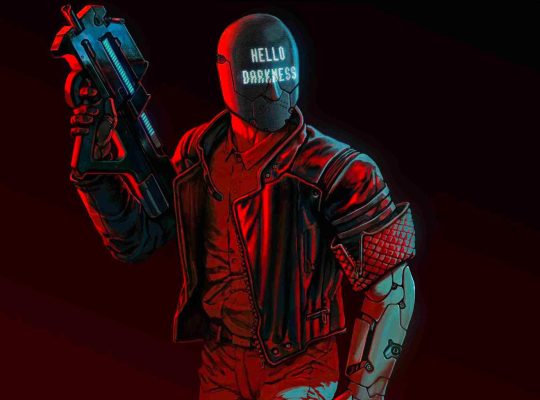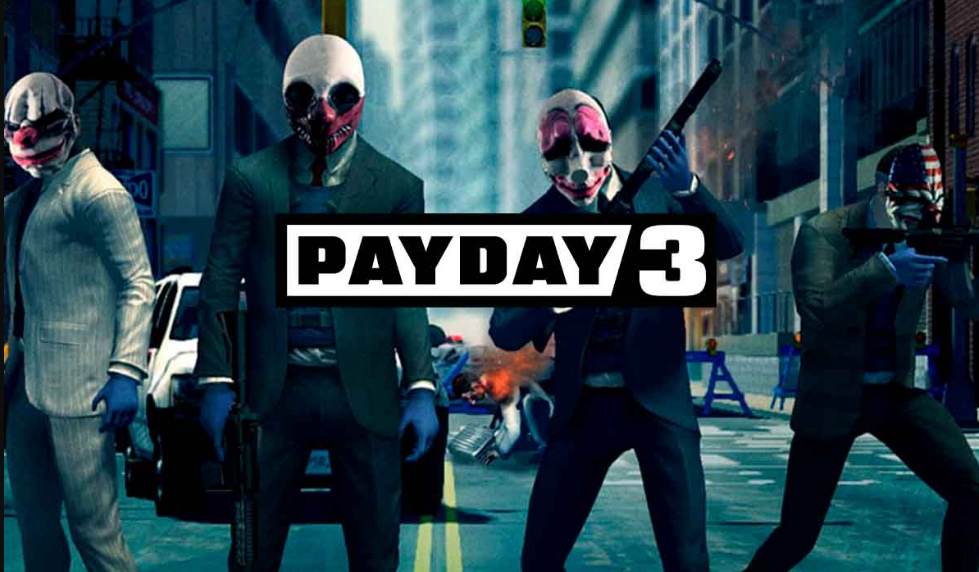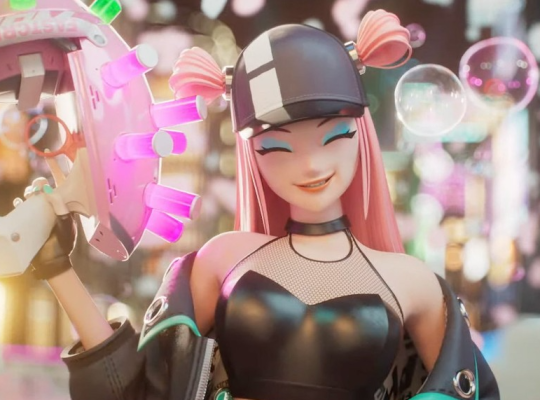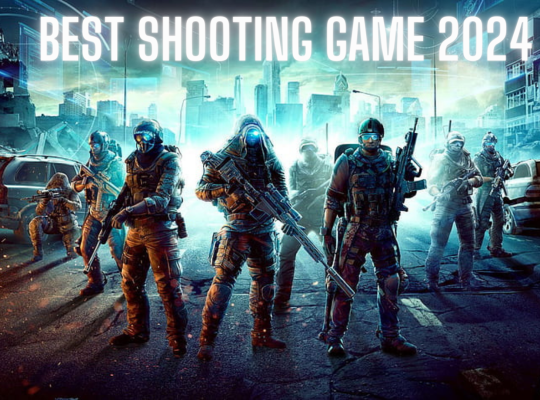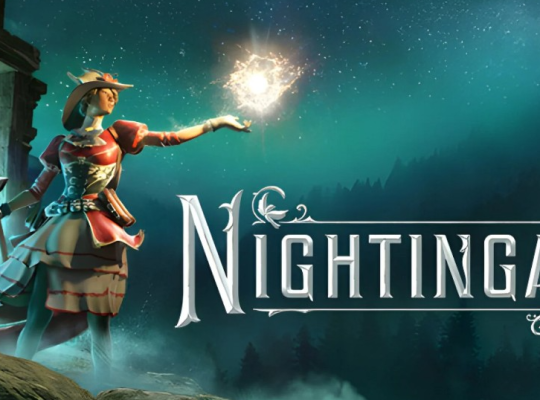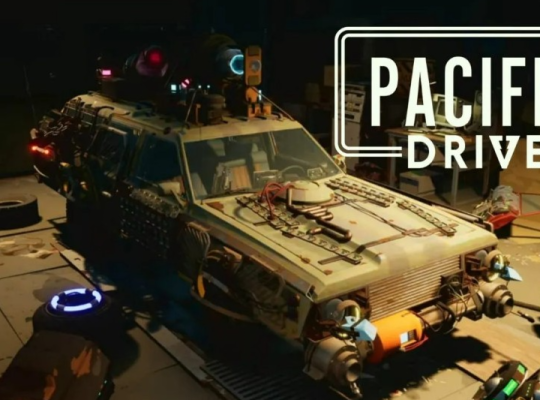Payday 3 wastes no time in asserting its demand on players’ time right from the start. The initial experience of booting up the game involves a hurdle that can be a significant time sink: the creation of a Starbreeze Nebula account. This mandatory online membership requirement is a potential mood dampener, akin to being handed an unappetizing biscuit and expected to swallow it willingly.
Furthermore, setting up a Nebula account may not be seamless, potentially leading to frustrating moments as players scramble for fixes that could consume precious minutes or even hours of desperate frustration. The imposition of mandatory sign-ups for online services in modern video games is equated to cramming an unpleasant biscuit into one’s mouth and expecting them to chew and swallow it.
Once players overcome the account creation obstacle and finally get a chance to play Payday 3, the experience aligns with expectations set by its predecessors. The game features multiple levels set in diverse locations and scenarios, with players tasked with completing a set number of objectives. In typical bank heists, players must keep hostages at bay, prevent them from escaping or seeking help, open locked doors, secure areas, survive waves of armed police, and ultimately make a successful getaway, provided they evade the hail of bullets from a swarm of grizzled SWAT forces.
The action begins slowly and methodically, with players and their crew contending with the standard prelude of attempting to break locks, corralling hostages to prevent them from alerting authorities and engaging in the art of lockpicking doors. However, proceedings quickly escalate as alarm bells ring, and police crash through glass panes, ready to eliminate the players and quell the riotous fracas. Players find themselves entrenched in intense stand-offs against relentless waves of armed police surging towards them.
The initial thrill of robbing banks is exhilarating. The on-foot sprints, rushing to retrieve a hefty loot bag of cash, and frantically dashing to the getaway convoy become par for the course. There’s an adrenaline rush unique to Payday, setting it apart from other multiplayer shooters on the market. Payday 3 manages to retain this rush, even though the routine activities inherent in heists can feel like running on a treadmill at a fast and consistent pace. Players can keep running and running, but eventually, the gas tank depletes, and the desire for more variety surfaces.
Regrettably, the shortcomings of Payday 3 become apparent as the game fails to evolve significantly from its predecessor, Payday 2. The lack of innovation and a reduction in content, including fewer weapons and features, positions Payday 3 as more of a downgrade than a true sequel. In contrast to Payday 2, which kept players engaged with abundant content, Payday 3 struggles to offer a satisfying array of options, earning it the tongue-in-cheek title of “Downgrade Edition.”
Despite these drawbacks, the core elements of Payday, such as thrilling heists and snappy gunplay, remain intact. The fast-paced feedback from weapons aligns seamlessly with the chaotic nature of the game. The in-game store allows players to purchase an array of weapons using the cash obtained from successful heists, ensuring a reliable arsenal for facing off against law enforcement.
while Payday 3 preserves the essence of its predecessors, the lack of substantial improvements and a dearth of content may leave both dedicated fans and newcomers feeling disappointed. The game, rather than being a true sequel, seems more like a light, piecemeal offering, earning it the tongue-in-cheek title of “Downgrade Edition.” Nevertheless, the fundamentals of Payday remain largely intact, offering players the opportunity to experience the thrill of heists and engage in satisfying gunplay. So, despite the game’s shortcomings, the spoils obtained from fending off hordes of armed police make the effort worthwhile for those who relish the chaos of the criminal underworld.
The Heist of a Lifetime: Unveiling Payday 3’s Bank-Robbing Fantasy
Payday 3, the latest installment in the highly successful multiplayer franchise, treads familiar ground, and rightfully so. Navigating the delicate balance of innovation and preservation of a dedicated fanbase, the game remains a four-player cooperative experience where a team of robbers collaborates to execute intricate heists. The core gameplay involves stealthily navigating through meticulously designed levels to accomplish objectives, resorting to firepower when plans inevitably unravel. While the overarching narrative is a collection of genre clichés, the game introduces subtle nuances to enhance the bank-robbing fantasy.
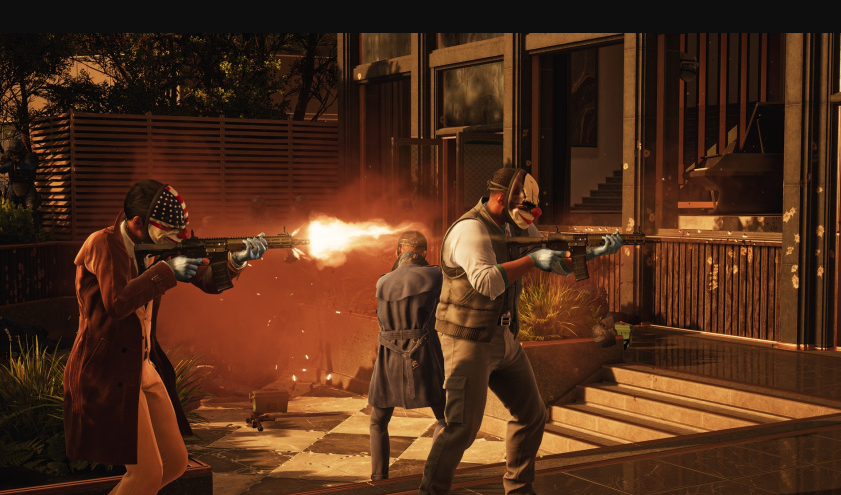
Devoted players will discern nuanced improvements such as increased movement speed and AI tweaks. However, the most noticeable changes elevate the heist experience by introducing elements that intensify the bank-robbing fantasy. One notable addition allows robbers to take hostages and negotiate with the police, buying crucial moments before an all-out assault ensues. These strategic negotiations inject cinematic flair and introduce tension between stealth and action phases, offering players a delicate balance to maintain.
The legacy support for Payday 2 has transformed Starbreeze into heist design virtuosos. Payday 3 debuts with eight distinct scenarios, each offering a rich variety of experiences. From infiltrating a local bank, employing thermite to breach a vault, and deftly disabling ink traps to navigating a bridge with a mobile truck reminiscent of Overwatch’s payload, the scenarios showcase the game’s diversity.
The thrill peaks with intricately designed levels, such as a nightclub caper revealing an underground rave concealing a massive vault, or a two-story art gallery mission involving QR codes and careful extraction of expensive artworks. The promise of varied heists bodes well for future content updates.
At times, Payday 3 seems to draw inspiration from recent Hitman games, adding a layer of deceptive complexity to its missions. While it doesn’t fully embrace the immersive sim genre, the game masterfully combines intricate design with the multiplayer shooter essence. The diversity of heists, each offering a unique experience, sets Payday 3 apart. Yet, it leaves room for speculation on whether a more radical departure from its established formula would have enhanced the overall experience.
While Payday 3 succeeds in offering varied ways to approach heists, it occasionally falls short of breaking free from its own established patterns. Despite minor changes in item locations and passcodes, the sequence of events can feel somewhat rigid. Players who successfully navigate a heist without detection might find themselves yearning for a more dynamic and unpredictable experience. While providing an escape room-like satisfaction in solving its challenges, the game prompts a desire for a broader range of possibilities in executing heists.
After a decade of heist fantasies fueled by great cinematic experiences like Rififi, players may find their imaginations running wild within the confines of Payday 3. The desire to barricade a bank’s front door or stealthily assume a teller’s identity to access restricted areas becomes more pronounced. The introduction of new tools is appreciated, but the game’s incremental creative leaps leave room for yearning, with players perhaps envisioning a Plan C that pushes the boundaries even further.
Payday 3 emerges as a dynamic playground for heist enthusiasts, offering a diverse array of scenarios and subtle improvements to its established formula. The game successfully balances familiarity with innovation, providing an engaging cooperative multiplayer experience. While the established sequence of events within heists may leave some longing for greater unpredictability, the richness of scenarios and the introduction of strategic negotiations add layers to the bank-robbing fanta
Building a Robber: Payday 3’s Intricate Progression System
In the dynamic world of Payday 3, where heists are the currency of choice, the missions may lack inherent replay value, but the void is artfully filled by a plethora of deep progression hooks. Every move in the game propels the player further into a web of rewards, keeping the adrenaline-fueled experience alive. The canvas of progression is painted with a sophisticated palette, including a leveling system, an array of in-game achievements, and an extensive skill tree to unlock through diligent “research.”
The level-up system serves as the cornerstone, gradually unlocking a treasure trove of customization options. With each completed mission, a new toy is added to the arsenal, offering players the delight of experimentation. The landscape of in-game achievements sprawls wide, inviting players to conquer challenges and bask in the glory of accomplishment. However, the crown jewel of progression lies in the extensive skills system, reshaped from its predecessor to allow players to craft specialized builds.
Whether adopting the role of a medic with enhanced revival abilities and health kit bonuses or deploying a turret as part of the Engineer skill line, each skill unlocked adds a layer of complexity and evolution to the player’s preferred playstyle.
Weapon customization emerges as a sturdy security bar, fortifying the intricate progression system. Each weapon, like a blank canvas, can be leveled up and adorned with multiple mods, offering a transformative experience. This allows players to reshape a humble starting pistol into a silenced handgun with a laser sight, adapting their arsenal to the challenges presented in each mission.
The revamped gunplay, swift and responsive, complements the flexibility of the loadout system. After a challenging mission, players can retreat to the proverbial lab, fine-tuning their weaponry to confront dense waves of opposition with newfound reliability.
The journey of progression isn’t limited to skills and weaponry; it extends to the very appearance of the player’s character. Fashion choices become a source of joy, providing the opportunity to dress up the robber in new threads and repaint guns. The cast of selectable characters gains personality through a variety of customizable options, a crucial element for a game designed for prolonged play and community support. Such details not only drive players to replay missions but also embolden them to take calculated risks, maximizing their haul. After all, those sleek suits and customized firearms won’t fund themselves.
For those who weathered Payday 2’s storm of controversies, the mention of microtransactions in Payday 3 may raise eyebrows. However, Starbreeze aims to assuage concerns by planning post-launch microtransactions limited to cosmetic items. While the implementation remains unseen, the assurance that premium currency won’t grant a pay-to-win advantage is a pivotal move. It reflects a studio that has learned from past missteps, ensuring a more foolproof plan. The community remains cautiously optimistic, hoping that Starbreeze stands true to its commitment, avoiding any double-crosses that might erode player trust once again.
In the symphony of Payday 3, the art of building a robber is a robust and harmonious affair. The intricate progression system weaves together various elements, from skill customization and weapon modification to personalization and the promise of post-launch cosmetic microtransactions. It creates an environment where each successful heist not only fuels the moment’s thrill but also contributes to the evolution of the player’s criminal alter ego. As the game unfolds, the building of a robber becomes a dynamic journey, blending the adrenaline of heists with the satisfaction of continuous growth and personalization.
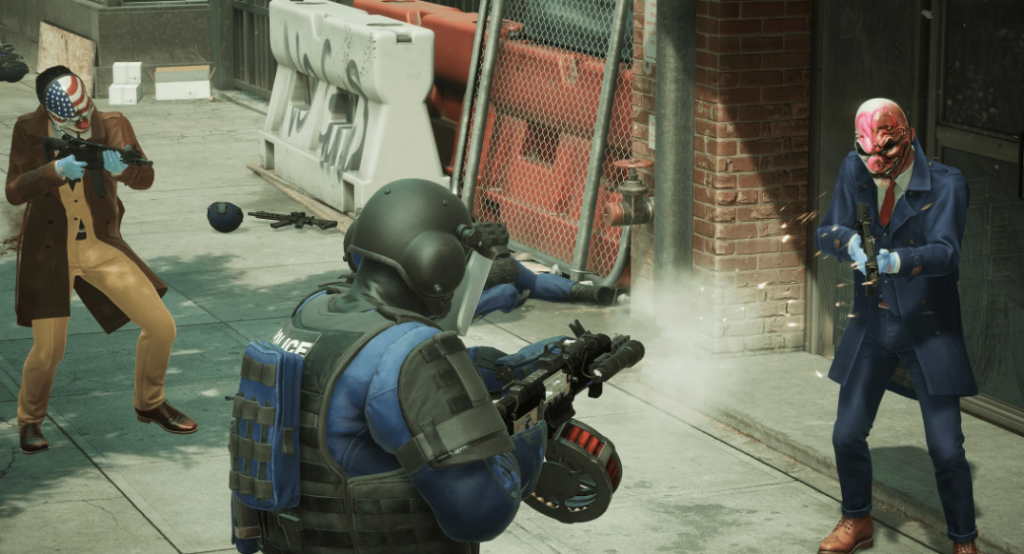
SHOW ME THE MONEY: Payday 3’s Heist Evolution
In the grand stage of Payday 3, the first significant shift is a change of scenery. Departing from the familiar streets and alleys of Washington, teams of four thieves, whether fully player-controlled or supplemented with AI, now orchestrate their heists in the bustling urban landscape of New York City. While the transition from one Mid-Atlantic city to another might seem routine, Starbreeze skillfully exploits the Big Apple’s cultural richness to infuse unique set pieces into Payday 3. The game captures a heightened sense of scale through carefully choreographed shots of New York City’s iconic skyline and landmarks.
Despite the city’s grandeur, Payday 3 launches with a relatively modest offering of eight missions. While designed for replayability, the initial selection may feel somewhat meager considering the game’s asking price. However, standout missions, such as the storage yard heist where chemically delicate components degrade in value upon retrieval, provide a series of points. Starbreeze’s blend of hand-crafted and procedural design keeps things fresh, with frequently altered maps through variables like Private Security modifiers that add complexity to security measures and elevate the replay value.
A notable technical upgrade in Payday 3 is the transition from Starbreeze’s proprietary Diesel game engine to Unreal 4. The difference is stark, evident in the enhanced detail of characters, environments, and firearms. The game sheds the harsh, flat qualities of Payday 2, embracing a greater level of detail and fluidity in play. While the fidelity may not be groundbreaking, the improved production value enhances the overall heisting experience, making it more enjoyable and intuitive.
In the full-frontal assault scenarios between your gang and New York City’s escalating response units, Payday 3 introduces a significant improvement in enemy AI. The boys in blue are no longer content with walking into your line of fire; instead, special forces act as tactical squads, attempting to flank exit routes and responding authentically to the context of each situation. They exhibit enhanced tactics, pushing forward strategically and working cautiously around civilians. The improved AI adds a layer of challenge and authenticity to the intense confrontations during heists.
In the world of Payday 3, the cry is clear: “SHOW ME THE MONEY.” The game’s evolution brings forth a change of scenery to the vibrant backdrop of New York City, providing a canvas for heists infused with cultural richness. While the launch offerings may seem modest, standout missions and the promise of future additions maintain the game’s allure. The technical upgrade to Unreal 4 enhances the visual and interactive aspects, making Payday 3 a more immersive and enjoyable experience.
The improved enemy AI adds a layer of authenticity, turning each heist into a dynamic and challenging encounter. In the world of high-stakes heists, Payday 3 continues to raise the ante, showcasing the evolution of heist dynamics with the iconic backdrop of the Big Apple.
Unveiling the Intricacies: Heist Dynamics in Payday 3
In the high-stakes world of Payday 3, the choice of whether to don a mask or keep it off becomes a pivotal decision, offering distinct gameplay experiences. With the mask off, the player engages in meticulous scouting, tracking crucial rooms and cameras, and discreetly pickpocketing keycards from unsuspecting guards. The goal is to gain access to the main security control room, enabling the hacking and disabling of security systems with a simple button press – ‘F’. Despite the difficulty of maintaining stealth, the game allows significant progress without the mask, providing a unique twist compared to its predecessor, Payday 2.
However, the pressure to wear a mask intensifies due to certain mechanics being exclusive to the masked mode. Basic actions like vaulting over surfaces are restricted without the mask, creating a tactical choice for players. Climbing through windows and brandishing a pistol are privileges reserved for the masked identity. Yet, it’s noteworthy how much ground can be covered without the mask, emphasizing the versatility of the approach in Payday 3. The ability to survey potential escape routes without drawing attention adds a layer of strategy to the pre-heist phase.
Once the mask is donned, the stakes escalate, marking the transition to more audacious endeavors. Armed with weapons, the squad gains the ability to intimidate civilians, tying them up and checking corners for cameras. Security guards become vulnerable targets for silent eliminations, allowing for smoother progression through the heist. Acquiring a silencer for the pistol becomes a strategic priority to avoid unnecessary attention. However, vigilance becomes paramount, as any lapse in attention – such as a dropped guard or an escaped civilian triggering an alarm – can swiftly derail the meticulously planned heist.
The irreversible decision to put on the mask adds an element of permanence to the operation, intensifying the narrative of the heist. The team must work seamlessly to navigate potential complications, ensuring the success of the mission. As the tension rises, the masked identity unlocks avenues for more nefarious actions, pushing the boundaries of the heist experience. Payday 3 becomes a balancing act between calculated reconnaissance with the mask off and executing daring maneuvers with the mask on, making each decision a critical part of the intricate dance of heist dynamics.
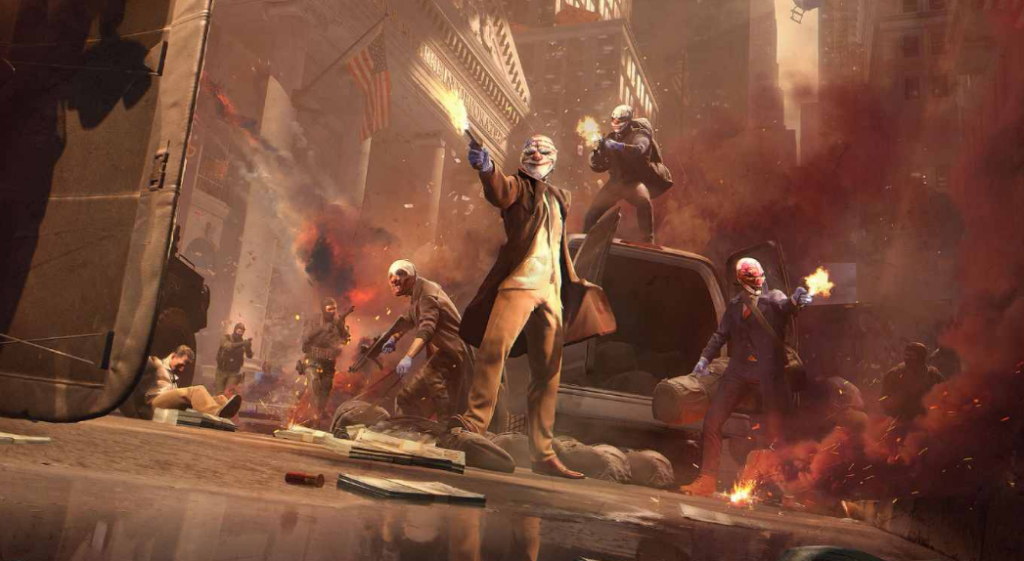
Diverse Heists, Shallow Tactics
Setting aside the unfortunate trend of players disrupting the experience, Payday 3 offers a genuinely enjoyable and addictive gameplay loop. With a lineup of around thirty heists, the game caters to various preferences, ranging from stealthy infiltrations to loud and chaotic offensives. Each scenario presents a unique set of challenges, ensuring players always have something to engage with. However, the game falls short in demanding more intricate tactics. The overall impression is that everything operates at a surface level, where the primary strategy seems to be shooting as much as possible and seizing the loot eventually.
Despite the variety in scenarios, Payday 3 lacks the depth one might expect, creating the illusion of complexity that doesn’t translate into gameplay substance. This observation doesn’t breed disdain for the game, but rather a sense of unmet expectations. The disparity between anticipated depth and the delivered experience creates a peculiar but not inherently negative dynamic. Payday 3 manages to be enjoyable, yet it sits somewhat distantly from the envisioned complexity suggested by its premise.
Final Verdict: Payday 3’s Evolution and Stagnation
In my limited experience with just one heist level, Payday 3 presents itself as a notable evolution from its predecessor, marked by a commitment to mechanical depth and the introduction of a plethora of high-tech tools. The focus on stealth injects creativity into the gameplay, allowing for free exploration and meticulous completion of objectives before unleashing chaos with the mask on. The contemporary setting adds a timeless quality, promising continuous growth through post-launch content.
However, the disappointment looms large after a decade-long hiatus, as Payday 3 feels somewhat insubstantial and hesitant to break away from the formula of its excellent predecessor. While the variety in heists and enemy types adds a cool factor, the repetitive nature of following predictable objectives and engaging in continuous shootouts with law enforcement becomes tiresome without refreshing twists.
For both veterans and newcomers, Payday 3 offers a showcase of heists across diverse locations, but for others, it may feel like a repetitive exercise in the mundane. The game’s ironic ability to steal your time without delivering substantial innovation becomes increasingly apparent. While teaming up with friends can enhance the experience, Payday 3’s potential remains hindered by a sense of familiarity and a lack of substantive content.
Read More – Sea of Stars Review – Retro Inspired Instant Classic Game





